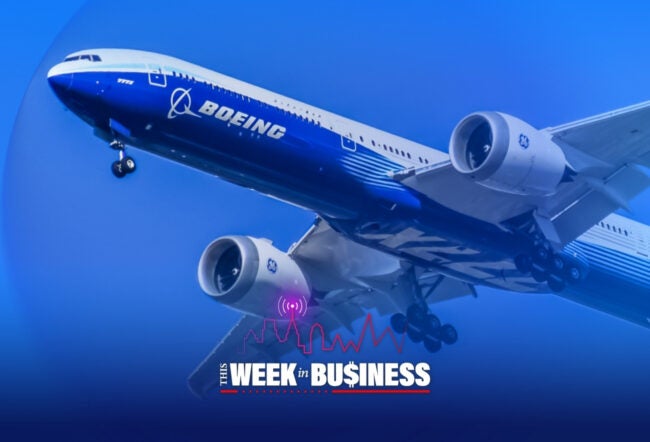Since 2004, Steven R. Loranger has been chairman, president and CEO of ITT, a diversified high-technology engineering and manufacturing company that plays a key role in global defense and security. The company had $9 billion in 2007 sales, $4.2 billion of which were generated by its defense electronics and services business. With its purchase of EDO Corporation at the end of last year, ITT has become one of the top 10 U.S. defense contractors.
Loranger has built his career in the aerospace and defense industry, including 21 years at Honeywell and its predecessor Allied Signal, where he eventually ran Honeywell’s $5 billion aerospace engines, systems and services business. He recently spoke with Knowledge at Wharton about how ITT has positioned itself for growth despite the economic slowdown, the company’s response to environmental concerns, and long-term trends for the defense industry.
Knowledge at Wharton: Thanks for joining us today, Steve. You said recently that ITT has effectively realigned and enhanced its portfolio for long-term success. Why do you feel ITT is poised for growth despite an economic downturn?
Loranger: ITT works to be a leader in attractive markets. By that we mean we do a lot of economic and strategic marketing analysis to find the profit pools, the growth components. We look for markets that are fragmented [in terms of] customers and competitive concentration and where we can develop high technology products and differentiate, as well as having a good mix in terms of global OEM and after-market.
But the most important thing about our focus is to make sure that we are building products that are essential and products that are really driven, in terms of demand, around long-term secular drivers. In the past several years, we have disposed of a number of businesses — most notably in commoditized electronics and in automotive components — that simply didn’t fit. And then in the balance of our business, we have concentrated our investments not only in engineering, but also in our selling and distribution capability around those attractive and essential components.
What we have today is a portfolio across ITT that is, for the most part, [based on] businesses-supporting, enduring growth drivers. We all know about the need for fresh water, and the need to protect against global security threats. When you just take a look at water: We have got an emerging population and environmental regulation, and we’ve got dramatic construction requirements for municipal and infrastructure development, not to mention environmental regulation and safety issues. These things are independent of economic cycles.
Looking at the unfortunate threats around global terror and the need for us to protect ourselves, defend freedom in terms of safety, security, intelligence and communication, we focused our defense business — which is roughly half of the company — into those technologies. So, all that said, we have a portfolio that is enjoying these long-term secular drivers around essential needs, independent — for the most part, not exclusively — but independent from economic cycles.
As a consequence, we believe that our portfolio has a nice hedge against the kind of economic downturns that we are all very, very much aware of. On top of that, I am pleased to say that we finished 2007 in record style and, as we look into 2008, we are looking forward to another very strong year.
Knowledge at Wharton: How has globalization affected the defense industry in the past 10 years?
Loranger: Our defense business is still principally U.S. [based]. Now, we do have an awful lot of people outside the United States, but they are for the most part operating on U.S.-based contracts. As an example, we do O&M, that is operations and maintenance. We do a lot of vehicle support and communications work in the Middle East, but that is all U.S. contracts.
What we see beyond that is our international allies — most definitively the NATO countries — really need to have interoperability with each other and including U.S. defense forces. So, when we are looking at our tactile communications business and our electronic warfare businesses, we’ve had some very nice growth trends outside the United States with international militaries where we have been selling some of the same components that we sell, obviously with the ITAR [International Traffic in Arms Regulations] and export restrictions, to the United States.
What we have really seen in that area is about a 15% growth rate. Today, we are only about 10% international in terms of actual sales, but we see that growth rate continuing, and that is going to be a larger piece of our portfolio in the future.
Knowledge at Wharton: What are some of the defense industry challenges and trends?
Loranger: I think what we are seeing is driven by the changing landscape of national, political and social conflicts. When you think about the traditional defense challenges in the past — where we had clear borders, clear geographical regions, we had political constituencies involved — quite frankly from a defense standpoint, it was a simpler combination.
Today, the global war on terror — or what is referred to as the “asymmetrical threat,” which means the threat that is coming at you independent of geography, independent of political, social and independent of economic areas — is one that is quite different than in the past. And what this means is technology is being driven more around information and information warfare, around security technology, around surveillance technology. It is clear that the military needs to be reset, and in that sense there is always a continuous modernization in the military.
The other thing that is happening is our overall processing capability has accelerated to the point where we are now implementing very real-time information. It is amazing to know that battlefield management is today being done through giant processing capabilities that include interoperability of people on the ground, people in the air and even space-based interaction.
The other thing that is happening to the defense industry is the continuing need to make it more agile. If you take a look at defense spending as a percent of GDP, it has gone down very significantly in the last 50, 60 years. So today, while it is still a big number in an absolute sense, it is a much smaller portion of the GDP, which means that we all need to be more frugal in terms of the application of our scarce resources. Those are the challenges that we all face.
Knowledge at Wharton: So much emphasis is placed these days on environmentally sound business practices. ITT has won recognition for its focus on corporate responsibility. In what ways is ITT responding to the greening of industrial and corporate America?
Loranger: First of all, we take it seriously. We believe that a corporation is not all about value. It is certainly central in terms of value creation, but we define “value” in terms of having value in a social framework and being a good community citizen. That also resonates well with employees, so you add all that up. We think it is important, and we think it is part of our responsibility to be a good corporate citizen.
We are doing a lot. We were thrilled with winning a recent award, which was around this balance of financial strength, environment and social responsibility, employee relationships and safety. Beyond that, we are really doing a lot of work.
First of all around water: We have a unique position with the technology in the world of water to make a difference, and we spend a lot of money in terms of technical innovation. We are working in areas that would develop solutions not only for the developed countries, but the underdeveloped countries. In the developed countries, it is all about advanced technology for improving your control systems, improving output quality or reducing the amount of energy.
In the undeveloped countries, it is all about cost-effective solutions. One example is our rural water project, where we are bringing to underdeveloped areas very simple but nonetheless cost-effective technology.
We “walk the talk” in our facilities, and certainly in all of our new facilities. We put in water purification, water reuse and then waste water purification technology. We participate in industry. I am on the World Business Council for Sustainable Development, where we are helping to create and promulgate the “water tool,” which is a tool used for companies to improve their understanding of their water usage and what they can do about it.
I also chair the Business Roundtable’s water initiative, which is part of our overall environmental and energy activity. And we sponsor things like the Stockholm Junior Water prize, youth journalism awards, and so forth.
The point is, there are a lot of little things that we do in many areas, and we are trying to make a difference. We are trying to make people aware, but we are also trying to make sure that when people view ITT, they see a responsible company and one that is in fact adopting the technologies that we are offering for everybody else.
Knowledge at Wharton: You have already touched on challenges and trends. Are there any other potential developments or changes that you feel might impact the defense industry going forward?
Loranger: I certainly can make a couple of comments, short-term and long-term. There is no doubt that we are about to engage, over the next year-and-a-half, in a vigorous debate with respect to short-term defense implications. You are well aware of varying views with respect to our foreign policy and our engagement in other counties. And with the upcoming administrative changes, we are going to see obviously some short-term perturbations. Your guess is as good as mine in terms of what direction that goes.
But I think what is more important beyond the short-term changes is that I actually don’t see any dramatic changes or developments over the long-term. I don’t see a dramatic shift. If you just step back and take the longer view, the United States, our NATO allies and other countries are going to continue to defend freedom. I don’t see that going away.
Unfortunately, the world with its various political and social constituencies isn’t getting any safer. And we wish it all worked that way, but fundamentally those trends of the need to defend freedom as well as the general safety level in the world are going to dictate that the course that we are on long-term is one that we maintain: dealing with technologies for the asymmetric threat, driving safety, security information technology and making sure that our militaries are lean and agile.
Beyond the short-term, I see a steady continued trend in the direction that we have been going ever since September 11.



